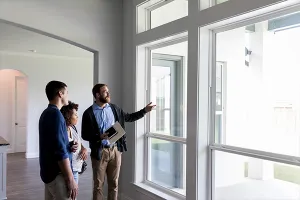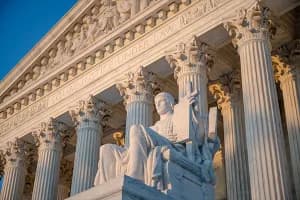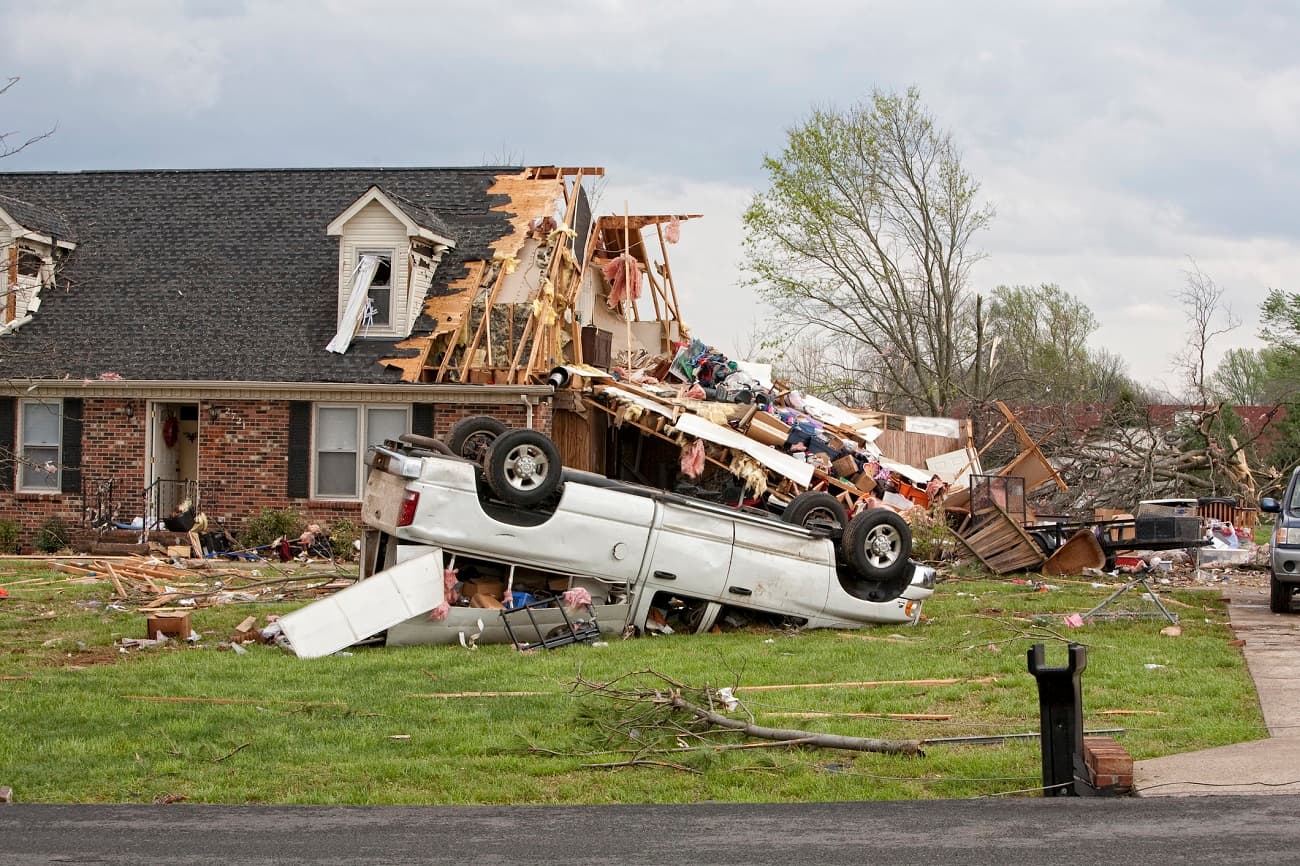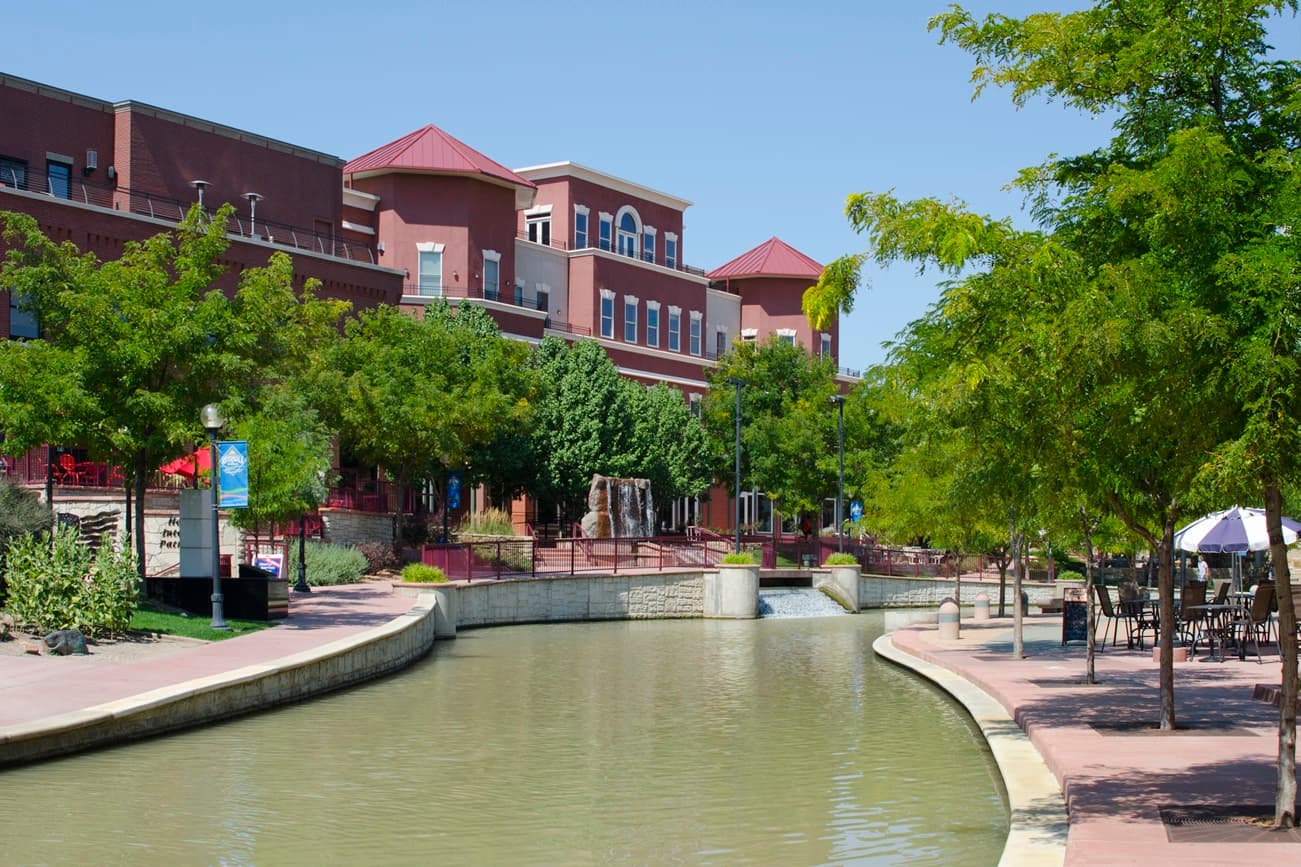While not everyone agrees on the cause of a changing climate, the consequences have never felt more real following the recent wildfires in the city of Los Angeles and catastrophic flooding in the North Carolina mountains.
Some communities battered by extreme weather might never fully recover.

At best the road to recovery will be long, hard and expensive, requiring hundreds of billions of dollars. But some communities battered by extreme weather events might never fully recover.
That’s because the damage caused by extreme weather doesn’t end when the fires go out and the floods retreat. What remains is a shaky financial foundation that could reshape entire communities. And without resilient planning actions and better land-use decisions, it could be just a matter of time before the full financial burden of disasters is felt in all communities across the country.
Federal Reserve Chairman Jerome Powell recently raised concerns about a tipping point in a Senate Banking hearing.
“Banks and insurance companies are pulling out of some coastal areas and areas where there are a lot of fires,” Powell stated. “What that is going to mean is if you fast forward 10 or 15 years, there are going to be regions of the country where you can’t get a mortgage.”
The Hill recently published an article, “Climate change reshapes cities, both environmentally and financially,” in which author Sal Elbein examines how a community might arrive at a point of no return.
In what Elbein calls “the anatomy of a death spiral,” the retreat of private insurance companies in response to rising climate risk is the first crack in a community’s financial foundation.
The escalating losses from extreme weather—both real and anticipated—leave insurers with two choices in high disaster-risk areas: Raise rates or withdraw from the market.
Most homeowners must carry insurance because it is required to obtain a mortgage. If insurance either becomes too expensive or is not available in some areas, mortgage companies may stop lending there.
If the situation snowballs as lenders stop providing mortgages or people choose to relocate, this could begin to impact property values and an area’s tax base. After a disaster, this tenuous situation leaves communities with less money to spend on recovery and essential public services such as schools and public safety.
“This isn’t all that complicated,” Sen. Sheldon Whitehouse (D-R.I.) stated during a Senate Budget Committee hearing last year.
Climate risk makes things uninsurable. No insurance makes things unmortgageable. No mortgages crashes the property market. Crashed property markets trash the economy.”

And the after-effects of a disaster on an already-fragile foundation, don’t stop there. When extreme weather events occur, cities and counties need large sums to rebuild roads, bridges and utilities and to become more resilient against future disasters. Municipal bonds are a go-to funding source for those types of projects. However, if tax revenues dwindle, credit rating agencies may downgrade vulnerable municipalities due to the risk of future disasters and doubts about their ability to repay bonds.
Disasters reduce funding for transit improvements, roads and bridges, and essential public services.
And with downgrades, come higher interest rates and increasing borrowing costs, just as communities need the money to rebuild, like what we are seeing in California. After the Los Angles wildfires, S&P Global Ratings downgraded the rating of the LA Water and Power Department by two notches, referring to “the increasing frequency and severity” of wildfires.
“I think we’re seeing the beginning of a crack,” Alice Hill, a senior director for resilience policy in the Obama administration, told Politico magazine. “We know that with climate change, there’ll be bigger and worse disasters that will affect communities’ abilities to repay those bonds.”
Last year in the United States, there were 27 weather and climate disasters that caused at least $1 billion in damages, trailing only the record-setting 28 events recorded in 2023, according to the National Centers for Environmental Information. Total damages amounted to $92.9 billion in 2023 and $182.7 billion in 2024.
The Los Angeles wildfires threaten to push the 2025 damage toll well past those figures. A report from the UCLA Anderson Forecast estimates that the two largest wildfires—the Palisades and Eaton fires—will be found responsible for $95 billion to $164 billion in property and capital losses once the final bill arrives. The report, authored by economists Zhiyun Li and William Yu, also predicts a 0.48 percent loss in county-level GDP for 2025, amounting to approximately $4.6 billion.

The devastation offers one small consolation. The fallout from climate disasters exposes a number of shortcomings involving insurance, taxes and development that may finally be addressed.
Insurance rates are an example, according to Austin Perez, senior policy analyst with the National Association of REALTORS®. “Insurance companies set rates based on what they expect to pay out including natural disaster losses to a property so generally, the higher the rate, the higher the risk.
However, government policies often cap or keep insurance rates artificially low, disconnecting the risk signal. Although that may sound like good news because lower insurance rates increase the amount people can borrow when applying for a mortgage, suppressing rates hides the true risk of a disaster and the true cost of insurance.”
“According to Federal Insurance Office data, some homebuyers are qualifying to live in high-risk areas based on paying 50-80 percent of the true insurance cost,” Perez said. “Unfortunately, most don’t find this out until after the disaster and their insurance costs have to adjust to reflect the true risk.”
Rate caps may keep insurance affordable in the short run, but after claims pour in after a disaster, insurance providers may raise rates if they can or withdraw from the market because they are not allowed to raise rates high enough to cover the true risk and cost.
In the event of a withdrawal by all private carriers, the only alternative for homeowners may be to apply to a state-backed insurer-of-last-resort called a “FAIR” plan that typically costs more and covers less than private insurers.
Homebuyers could make a more informed decision about where they can actually afford to live.
If rates were allowed to reflect the true risk and cost from the beginning, this would be less of an issue. Insurance providers could continue to make coverage available to those who could afford higher rates while homebuyers could make a more informed decision about where they can actually afford to live.
“Like any other business, insurance companies must cover their costs long term or exit the market,” said Perez. “Some insurance companies are in a hole right now and simply can’t afford to keep digging.”
Escaping the hole won’t be easy. First Street, an organization that uses advanced climate science and engineering to evaluate the risk for every property in the country, released a recent National Risk Assessment that estimates that unrestricted risk-based insurance pricing would drive a 29.4 percent increase in average premiums by 2055—an 18.4 percent correction from current underpricing and an 11 percent increase from growing climate risks.
Compounding the insurance conundrum is the tightening of the reinsurance market. Reinsurance, which basically involves buying insurance for insurance, is a way for insurance companies to offset some of their liability, but reinsurers have upped their prices and stiffened their terms in response to mounting disaster-related losses of their own.
Catastrophe bonds are an emerging alternative that enables insurers and reinsurers to sell short-term bonds to investors. Investors receive high yields but lose their principal if a predefined natural disaster occurs before the bond matures.
One way to cure the insurance headache for good involves some pretty strong medicine: offering federal incentives for communities to move from high-risk areas to safer locations. The buzzword for that is managed retreat. “We already offer incentives in Coastal Barrier Resource Act (CBRA) zones, but eventually, the country may have a broader conversation about where federal assistance should and should not be allowed, but I don’t think we’re there yet,” Perez said.
What should come first is a focus on resiliency to minimize the risks and costs of damage from disasters, a strategy that can address the conflict between the affordability and availability of insurance, Perez said.
If you make it less likely for the property to be damaged, then the insurance price is going to follow that.
“Essentially an insurance rate is just the risk and cost of replacing the home,” he said. “If you make it less likely for the property to be damaged, and when it is damaged the (loss) is reduced, then the insurance price is going to follow that.”
The good news is that making homes and communities more resilient and well prepared has strong bipartisan support from the federal and state governments as well as other authorities. “There are all kinds of programs to empower individuals to harden their homes against disasters,” Perez said.

Clearing combustible vegetation from perimeters, installing metal roofs and elevating homes above flood levels are examples of resiliency and preparation strategies that diminish the loss caused by disasters. “Making safe homes affordable should be a national priority,” Perez added.
The total payback from investing in resilience and preparedness is impressive. Every $1 spent results in a $13 savings, according to a recent report from the U.S. Chamber of Commerce and Allstate Insurance.
Expanding on an already accepted payback ratio for damage and cleanup costs, “The Economic Benefits of Investing in Climate Resilience” report calculated a payback ratio related to economic losses. It turns out the two ratios are almost identical—a $6/$1 payback related to damage and cleanup and a $7/$1 payback related to the economy in terms of job preservation, income growth and GDP.
The economic benefit ratio is based on models of 25 disaster scenarios ranging from a hurricane in Miami to a tornado in Nashville to a wildfire in Santa Fe. Each scenario compares the total economic cost of future natural disasters both with and without investments in resilience and preparedness.
Those investments could include, protecting critical infrastructure; retrofitting buildings; removing existing hazards; adopting new zoning and building codes; conducting public outreach and education; and installing early warning systems.
In a Nashville example, the report estimates resilience and preparedness investments of $83 million would reduce GDP loss by $683 million, income loss by $464 million, job loss by 5,324, labor force reduction by 1,296 and population loss by 1,498.
“We know that there are more billion-dollar disasters than ever and we can’t just keep looking at the increasing amount of disasters and increasing cost of disasters,” said Rob Glenn, vice president global resilience at the U.S. Chamber of Commerce Foundation. “We need to do something about it.”
Sometimes that may mean standing your ground, or — getting out. First Street’s climate migration projections predict that more than 55 million Americans will voluntarily relocate within the country to areas less vulnerable to climate risks by 2055. The first 5.2 million is estimated to leave this year.
During that same period, First Street estimates that 70,026 neighborhoods (84 percent of all census tracts) may sustain a combined $1.47 trillion in net property value losses stemming from migration and insurance challenges related to climate risk. That will be marginally offset by a subset of “climate-resilient” neighborhoods that stand to gain approximately $244 billion in value.
Choosing between fight and flight is a more complicated decision than it might seem. While it’s possible to estimate where disasters are most likely to pose a threat, probabilities are not certainties.
“We’re talking about risks and percentages… so this isn’t a one-time calculation people have to make. It’s an ongoing calculation,” said Vanessa Williams, senior fellow at the Brookings Institution. “People are dealing with higher and higher uncertainty.”
So are state and local governments. When disaster strikes, their reliance on property taxes for revenue reveals the uncertain nature of that funding source.
One example is the way property taxes reward risky development. Many disaster-prone areas are otherwise very desirable places to live because of the sunny weather, beautiful beaches or nearby wilderness. Since the property values reflect that desirability, cities and counties may allow development in the area because it produces more property tax revenue—until it doesn’t.
While a disaster may temporarily depress property values and taxes, many studies find more than a rebound happens. In California, for example, a study of wildfires between 1990 and 2015 found that taxes increased despite the number of homes that were damaged or destroyed.
The reason? More properties were sold and assessed at current market values after years of being underassessed due to California’s cap on tax hikes.
In places where property values and taxes initially dip after a disaster, municipalities may be able to assist. But that could add to the financial burden already on homeowners due to rising insurance costs.
Gentrification can also be a byproduct of the instability, according to Williams. In one scenario, people choose to move to safer neighborhoods that were not previously viewed as desirable, raising prices and costs for original residents.
In another scenario, people with the means to obtain insurance, make their homes more resilient and pay higher taxes to safeguard the community, choose to move to disaster-prone areas, buying homes at low prices from people who can’t afford those costs.
The economy of hazards from extreme-weather events is impacting communities across the nation.
“The risks of these compounding crises are real,” Williams said. “It is very serious.” The economy of hazards from extreme-weather events is impacting communities across the nation, including direct losses like property damage and indirect losses like business disruptions and long-term economic consequences.











